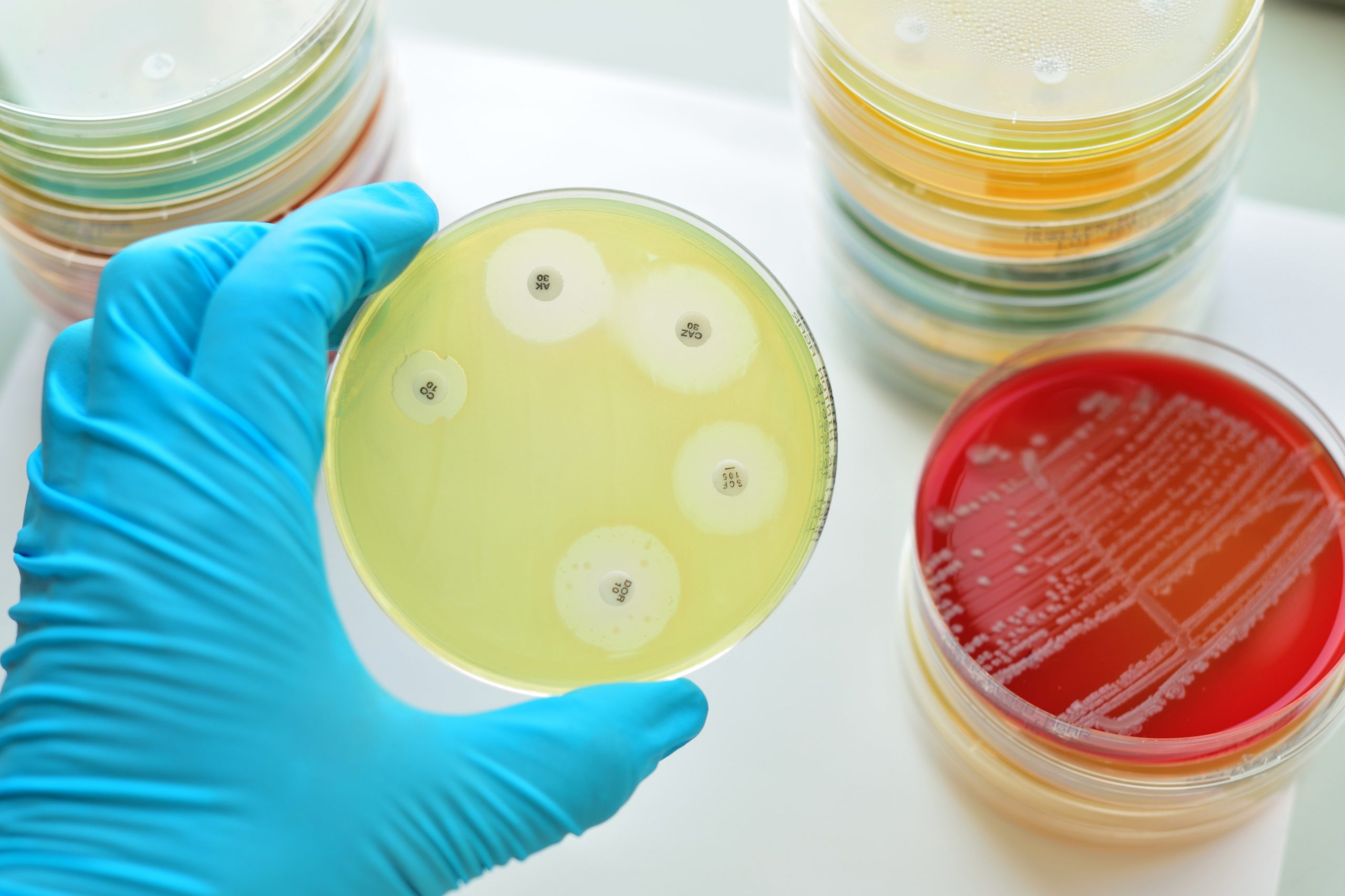4 pillar approach to antimicrobial resistance

Antimicrobial resistance is a global problem. To combat this, activities need to be implemented across the different sectors of food and agriculture systems to embrace a ‘One Health’ approach. The FAO action plan based on 4 main pillars aims to do just that.
There are growing global concerns about resistance to antimicrobial drugs, including antibiotics, amid fears that Antimicrobial Resistance (AMR) will reverse previous gains. AMR, referring to micro-organisms – bacteria, fungi, viruses, and parasites – that have acquired resistance to antimicrobial substances, is a phenomenon which can occur naturally through microbial adaption to the environment, but it has been exacerbated by inappropriate and excessive use of antimicrobials.
Estimates of the total annual global consumption of anti-microbials in agriculture vary considerably. This is due to poor surveillance and data collection in many countries. For example, only 42 countries in the world have systems to collect data on the use of antimicrobials in livestock. Estimated global antimicrobial consumption in the livestock sector in 2010 was 63,151 tonnes. Of particular concern is the fact that two-thirds of the estimated future growth of antimicrobial usage is expected to occur within the animal production sector, with use in pig and poultry production predicted to double.
The fact that human and veterinary health, food and feed production systems and agro-ecological environments all contribute to, and are affected by, AMR indicates the need for a multi-sectoral and multi-dimensional ‘One Health’ approach to curb its occurrence.
Implementation of FAO action plan
Resistant micro-organisms and genes do not recognise geographical or ecological borders. Resistance arising in one geographical location or species can spread with ease to other geographical locations through movements of food, water, animals and/or people; it can spill over into other species, impacting developed and developing countries alike. The containment of AMR requires a global approach combined at national level with concerted actions that span the policy and regulatory spheres, and with preventive actions and engagement with producers and other food value chain stakeholders.
The Food and Agriculture Organization of the United Nations (FAO), has identified 4 main pillars of work on AMR, which serve as the focus areas for the FAO action plan. These 4 areas are strongly interrelated and need to be addressed in parallel (Figure 1).
Figure 1 – The 4 focus areas of the FAO action plan on antimicrobial resistance.

The 4 key areas for action in the food and agriculture sphere are:
- Awareness: Improve awareness of AMR issues among farmers and producers, veterinary professionals and authorities, policymakers, and food consumers.
- Evidence: Develop national capacities for surveillance and monitoring of AMR and antimicrobial use (AMU) in food and agriculture.
- Governance: Strengthen governance related to AMU and AMR in food and agriculture.
- Practices: Promote good practices in food and agricultural systems and the prudent use of antimicrobials.

Pillar: Awareness
A minimum understanding of the issue and why it is relevant to all stakeholders along the food chain is considered to be a prerequisite for change and commitment to action. The relevance of AMR to food and agriculture, in terms of both its impact on the sector and of the sector’s role in addressing the problem, is not always apparent. This focus area seeks to take immediate action to raise awareness of AMR by developing communication and advocacy products that target different sectors and that help countries find appropriate, culture-sensitive ways to disseminate key messages and understand the challenges and risks they face from AMR. Focus area 1 links with focus area 2 (evidence) as the FAO fully recognises the importance of evidence-based messaging and of ensuring that it is relevant to the food and agriculture sectors. Recognising that consideration of AMR and its impact needs to become an integral part of the food and agriculture policy environment, the awareness focus area will also advocate for consideration of AMR at global and national levels and work in cooperation with other organisations concerned.

Pillar: Evidence
Understanding the extent of antimicrobial use (AMU) and AMR in the food and agriculture sectors is a basis for driving action and is also critical to measuring the impact of initiatives and progress made in addressing this problem. Acknowledging that it can be challenging for countries to take action based on data from other parts of the world, this focus area aims to support local data generation in support of local action and in progressively building local capacity to generate more extensive data. This work will also be implemented in close collaboration with OIE and WHO to support integrated systems of surveillance and monitoring and to promote data sharing across sectors at local and global levels. The ‘evidence’ focus Area will also aim to make widely available information on AMR that is particularly relevant to the food and agriculture sectors.

Pillar: Governance
The capacity and resources of many countries to take action to address AMR is dependent on political commitment, appropriate policy and a relevant regulatory or legislative framework in which to operate. This area of work aims to support countries in that endeavour. As well as supporting national-level work, this focus area also encapsulates FAO support to the setting of international standards relevant to AMR and the development of the evidence and scientific basis on which to base such standards. The latter areas will also link strongly to the second focus area – evidence. Recognising the different types of information needed to facilitate political commitment and the development of evidence-based policies, this focus area will also concentrate on providing information on alternatives to AMU, the economic aspects of the AMR problem and the measures needed to address it.

Pillar: Practices
The success of the first three focus areas will only be complete if it ultimately drives change and leads to the development and implementation of practices that positively contribute to addressing AMR. However, there are a range of factors that need to be considered in effecting change, not least of which are economic aspects and the availability of viable alternatives. Such changes also need to be implemented in the context of efficient and inclusive food and agriculture systems to ensure that FAO’s objectives for hunger reduction are also supported. This focus area will centre on developing and supporting the practical measures to be taken in the food and agriculture sectors to minimise the need for antimicrobials (e.g. improved biosecurity to reduce infections), reduce the use of antimicrobials (e.g. focus on good practices in therapeutic use and identifying alternatives to antimicrobials) and minimise or prevent the spread of antimicrobial resistance (e.g. good hygiene practices). While it will build on the outputs of the other focus areas, efforts here need to begin immediately to convert existing knowledge into improved practices.
Global ‘One Health’ approach The FAO action plan is running in parallel with the WHO-led global action plan on AMR which highlights the necessity of adopting a ‘One Health’ approach. Achieving this requires involvement from public health and veterinary authorities, the food and agriculture sectors, financial planners, environmental specialists, and consumers. The objective of the global plan is to assist member states in developing and implementing multi-sector national action plans to efficiently combat AMR.
This article is based on the publication ‘The FAO action plan in antimicrobial resistance, 2016-2020’.











